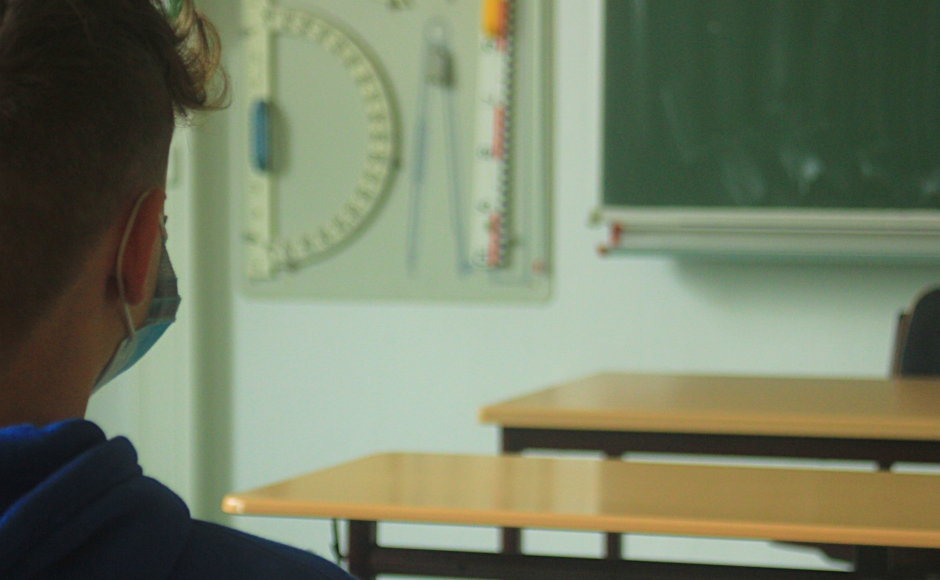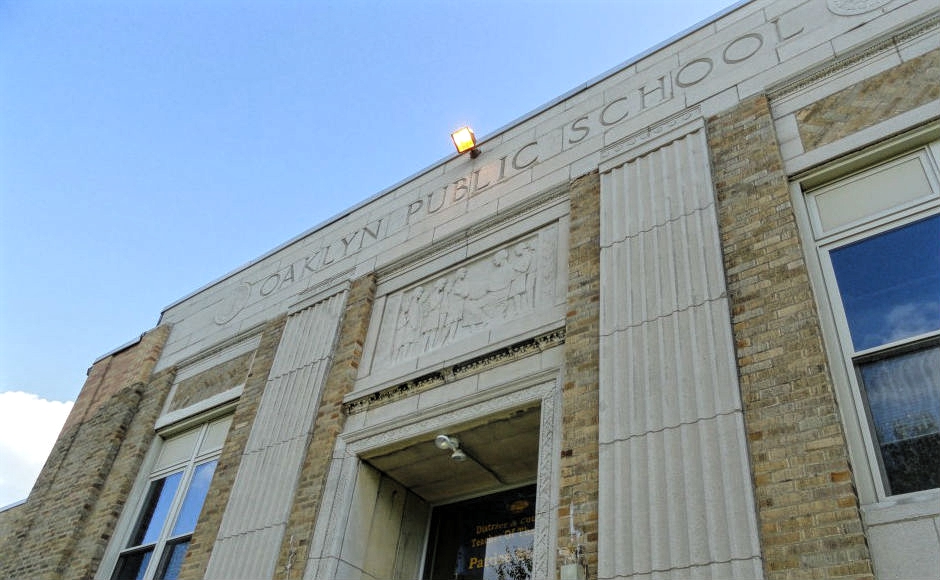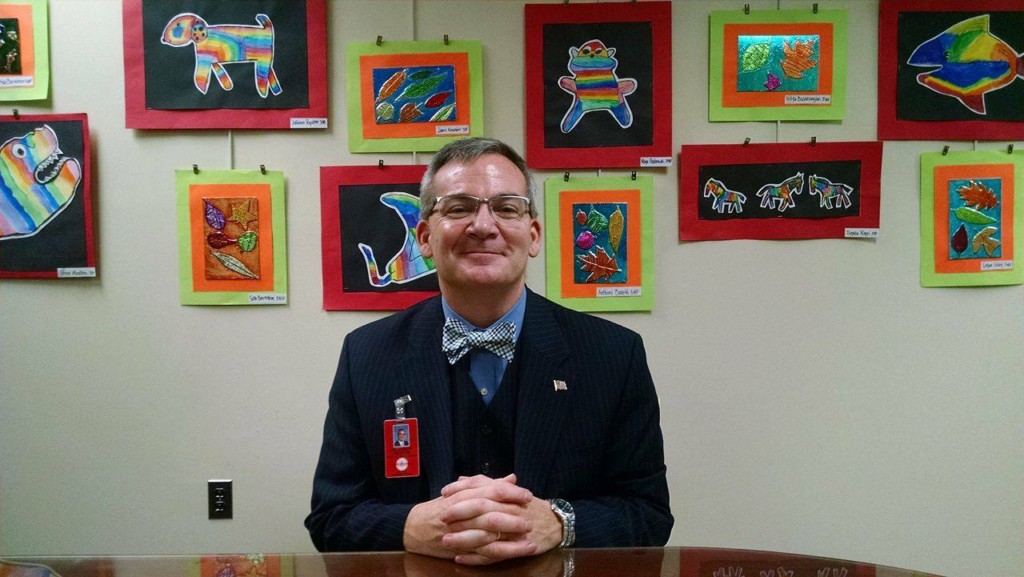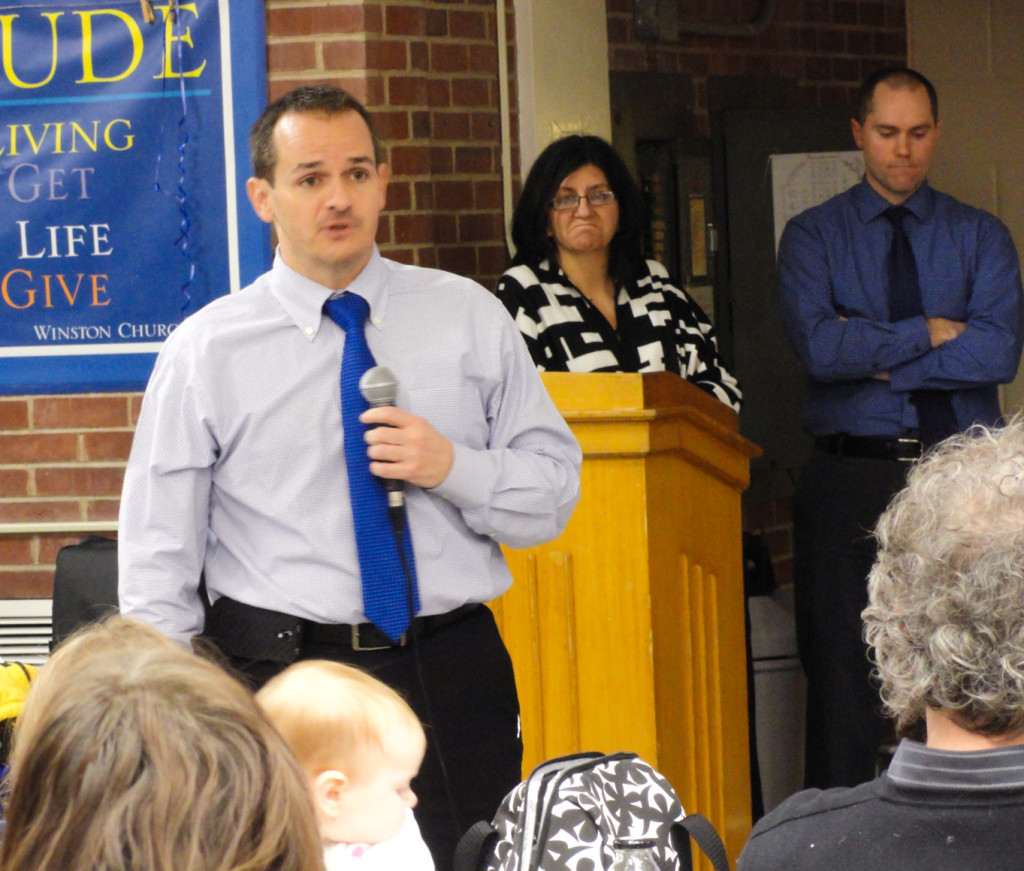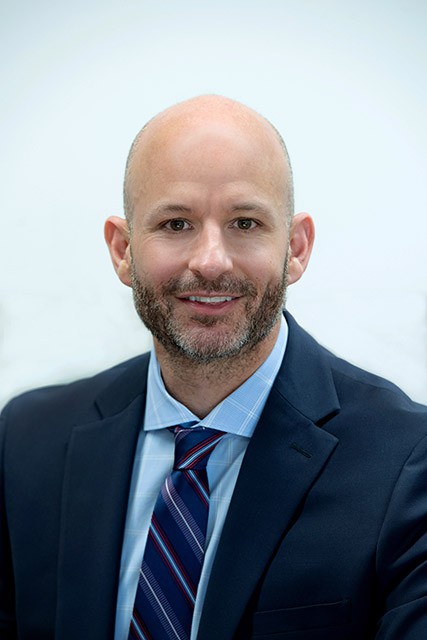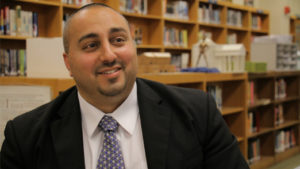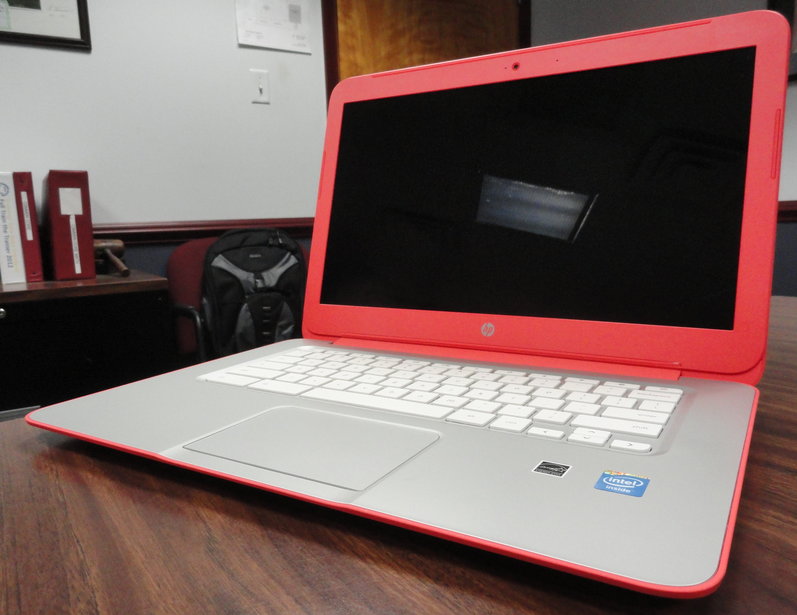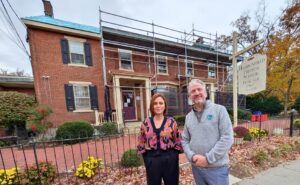What are the conditions for the safe reopening of public schools in Camden County? We spoke with five superintendents about the risks and challenges of making district-wide learning safe and equitable.
By Katrina Janco and Matt Skoufalos | August 11, 2020
In less than a month, New Jersey’s 1.4 million school-aged children and the staff and educators that support them will begin a new school year.
Beyond the uniqueness of their individual circumstances, the back-to-school experience of 2020-2021 may be even more widely varied for each of them than ever before.
Aside from the fully remote option vouchsafed by the New Jersey Department of Education (NJDOE) in late June, New Jersey’s 104-page “Restart and Recovery Plan for Education” gives local communities wide discretion to shape their own education plans.
The principal concern for each of them, of course, ought to be whether it is safe to return to physical classrooms at all, given the unabated community spread of novel coronavirus (COVID-19) throughout the summer.
The virus, for which neither proven therapeutics nor vaccines have been developed, has already infected more than 185,000 New Jerseyans and has contributed to the deaths of more than 14,000 others.
Throughout the pandemic, New Jersey also has diagnosed 55 children 18 and younger with pediatric multisystem inflammatory syndrome, a condition that is believed to be COVID-19-related. All 55 have tested positive for the virus. Although the state has only seen two COVID-19-associated deaths of children, and both were four or younger, more than 200 children have been hospitalized with the virus.
Long-term effects of COVID-19 remain mostly unknown; however, the CDC reported July 31 that the impact of the virus can linger “even among young adults without chronic underlying medical conditions.” Another recent data analysis from doctors at the Ann & Robert H. Lurie Children’s Hospital in Chicago, Illinois indicated that kids younger than five may carry more of the virus in their upper respiratory tracts than adults do, and can spread it more rapidly in school and daycare settings.
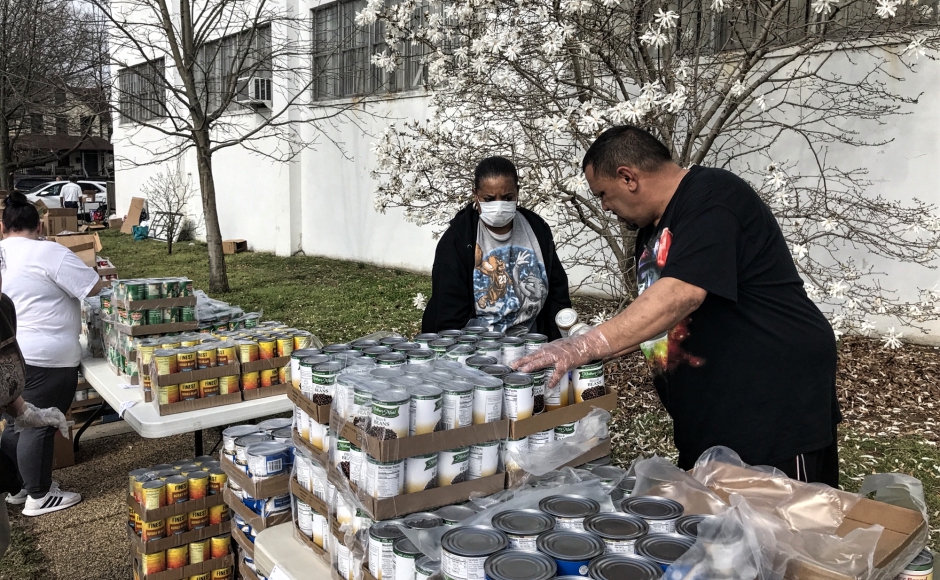
Volunteers at a pop-up neighborhood distribution point during the COVID-19 pandemic. Credit: Food Bank of South Jersey.
In addition to their burden of creating a healthy and safe learning environment for students, educators, and staff, schools also function as a core piece of the American social safety net, providing subsidized meals, interventional services, and child care before and after the school day for working parents.
When they’re closed, the issues those programs are designed to ease—and which have arguably become exacerbated during the pandemic—don’t resolve on their own.
But the question of whether physical classrooms can open safely, and of what must be done to protect their occupants, means balancing the risks borne by those who attend and provide in-person instruction versus the impact of not doing so.
‘If you want to do it, do it right’
Last month, in conjunction with the Coalition for Healthier Schools, the New Jersey Work Environment Council (WEC) issued “The Pandemic vs. Schools,” a national call to action emphasizing the importance to districts of having a solid plan before reopening.
WEC is a Trenton-based labor coalition that typically concerns itself with workplace health and safety issues.
“Schools can either slow the spread of the virus or speed it up,” the report reads.
“Right now, schools across the country are struggling to come up with these plans on their own,” a task, it argues, for which many are ill-equipped to respond on the fly.
Most guidance published to date is only about offering options to local schools. Right now, those schools are making their own decisions about how to reopen, despite the ever-changing science and their lack of public health expertise.
This disconnected, piecemeal approach will accelerate the spread of the pandemic. It will also perpetuate already deep disparities in education and health and deprive the poorest parents and communities of authoritative public health tools and guidance they can use to urge schools to be accountable for school health.
—”States Must Guide Schools on Reopening, Slowing Spread of Virus,” prepared by Healthy Schools Network and the New Jersey Work Environment Council
Healthy Schools Now campaign organizer Heather Sorge said an unprecedented absence of federal guidance for public school re-openings has resulted in uneven school re-openings across the country. She hopes that districts will take the time to create rigorous health and safety plans before returning to in-person instruction.
“I know there’s a big rush to return to normalcy,” Sorge said. “However, if you want to do it, do it right.
“We don’t want to go backwards, and we certainly don’t want to rush to find out that we were wrong, and that we started too soon, or that we didn’t have the right things in place,” she said.
“We can’t be too careful when it comes to the health and safety of our staff and students.”
Physical infrastructure
A key underlying concern for reopening schools is their physical condition.
The WEC report highlights the impact of poor classroom environments on children’s learning, even as it notes that the bulk of infrastructure issues in the public education system are unlikely to be addressed prior to reopening.
By way of example: in June 2020, the U.S. Government Accountability Office (GAO) estimated that 41 percent of districts nationwide must replace heating, ventilation, and air conditioning (HVAC) systems in half their schools; about 36,000 buildings nationwide.
(In the past five years, several Camden County school districts—Haddonfield, Haddon Township, Oaklyn, and Pennsauken—have completed major facilities projects, while Cherry Hill and Collingswood saw facilities bond measures voted down.)
Under the spotlight of COVID-19, which is airborne and community-spread, concerns with re-circulated air have led New Jersey to place strict limits on sedentary, indoor activities, and to prioritize telework. These same safety concerns link school buildings and the time spent in them to potential transmission of the virus.
Asked about the factors that informed their reopening plans, superintendents from five Camden County school districts all said their districts had no known environmental concerns that could potentially aggravate the risk of contracting COVID-19 there.
Collingswood and Oaklyn Superintendent Scott Oswald said HVAC systems in both districts have filtered, fresh-air intakes, and that their filters will be upgraded to higher-rated models.
Most Cherry Hill public school buildings have window air conditioning units, and they’re older, said Superintendent Joseph Meloche.
Others have some air circulating in separate systems for offices and libraries; in the past few years, the district also has installed de-humidifiers in some buildings to deal with moisture issues, Meloche said.
Haddonfield Superintendent Chuck Klaus said the fresh-air intakes on district ventilation systems will be increased from a 20-percent minimum up to 100 percent, weather permitting.
Systems will be run in the evenings and on weekends to increase fresh air circulation, and Klaus said the district is considering upgrading to high-efficiency filters, too.
Thanks to the 2018 passage of a $36-million bond referendum, most of the HVAC systems in the Pennsauken school district have been recently replaced, said Superintendent Ronnie Tarchichi.
Even so, he said HVAC facility checks are performed daily, and referred to the in-building air flow as “perfect.”
New Haddon Township Superintendent of Schools Robert Fisicaro said a certified master HVAC technician is completing an evaluation of every system in the district.
Every superintendent expressed support for creating outdoor classrooms wherever possible, however, only the Collingswood and Oaklyn school districts are looking into buying tents and canopies.
Sanitization
In addition to managing air quality issues, sanitization, especially of high-touch areas, is a priority in every district.
Many are stepping up their cleaning efforts and taking extra precautions.
Cherry Hill schools will provide hand sanitizer stations in all classrooms, arrival spots, and “mixed spaces,” Meloche said.
“I’ve had occasions to spend time in hospitals over the last few years, and when you watch the hospital employee come into a patient room, the first thing they do is go for the hand sanitizer, [and] sanitize their hands,” he said.
“Even if there’s no touching between the employee and the patient, as they leave the room, they [put on] hand sanitizer again,” Meloche said. “So, a lot of it is about education and practicing those protocols.”
Haddonfield schools have purchased handheld ultraviolet (UV) wands and ODOROX hydroxyl generators for all nurse’s offices, which replicate the atmospheric processes that kill bacteria, viruses, and mold.
Haddon Township has hired a third-party, professional cleaning service that will use hospital-grade disinfectants to clean primary surfaces throughout the district five days a week, including high-touch points in common areas and restrooms, Fisicaro said.
Pennsauken will deep-clean classrooms, hallways, and buses nightly, as well as sanitizing buses between routes. Tarchichi said the district will comply with all NJDOE and CDC guidance.
“Everything they recommended, we are doing,” he said, referencing guidance for personal protective equipment (PPE), social distancing, and air flow.
Safety concerns and responsibilities
Community spread of COVID-19 has kept New Jersey in the second of its four-stage reopening plan, and the challenge of maintaining hygienic practices, social distancing, and mask-wearing in classrooms is a significant burden shared by every school district.
Each of the superintendents acknowledged that bringing students and staff back during the pandemic presents an unknown level of risk; each also believes his district’s plan appropriately takes these factors into consideration.
While New Jersey has offered individual families the right to choose a fully remote schooling option for their children, no district has collectively been given the same choice, Oswald noted.
“As such, a family would need to decide which risks they are willing to tolerate,” he said. “We will do everything in our ability to provide a safe, secure, clean, and healthy environment as best we can during a pandemic.”
Teachers, however, are also struggling with the weight of those risks. In a July 31 interview with NJ Spotlight, New Jersey Education Association (NJEA) communications director Steve Baker said his organization “is advocating every day that we have to keep the safety of children and educators primary.
“There are major challenges to that, and it is not clear at this point that districts will be able to rise to those challenges,” Baker said.
Nationally, parents and district employees concerned about the safety of in-person instruction have begun using the hashtag #WhenItsSafe. (So has NJEA.)
Sorge said she hasn’t heard from any teachers who do not miss the classroom or their students.
“They all want to come back,” she said; the issue is doing so safely.
On July 22, Christine Miles, Associate Director of Professional Development and Instructional Issues with the New Jersey Education Association (NJEA) asked the State Assembly to consider a list of minimum reopening requirements, saying that parents “would never knowingly send our children to school when a credible threat against human life is present.”
If we reopen brick and mortar school buildings before it is safe to do so, we are not merely placing an unacceptable physical, mental, emotional, and financial burden on our districts, educators, and support staff. We are also putting a significantly traumatic and irreversible burden on our children.
It is inevitable that adults and children entering school buildings will be asymptomatic; it is inevitable adults and children will become infected; and, it is inevitable that people will die.
We cannot knowingly place this burden on anyone, and allow them to carry that weight throughout the remainder of their lives.
—Christine Miles, NJEA Associate Director of Professional Development & Instructional Issues
Meloche said Miles’ remarks, though “strongly worded,” are representative of concerns shared by parents and teachers.
“[But] that’s a very large umbrella under which to couch things about a credible threat, and what we are doing, and what our responsibility is,” he said.
Although the Haddon Township school district “cannot eliminate the risk associated with in-person instruction, it is our responsibility to do everything we can to mitigate it,” Fisicaro said.
“From the moment Governor Murphy announced that an in-school option was required, our staff has been engaged in the planning process to safely reopen our schools,” he said.
“They are passionate about making it possible to educate our children safely while maintaining our high standards for instruction.
“I’m incredibly proud of everyone involved,” Fisicaro said.
“It’s understandable that there is a range of emotions tied to this issue, and we continue to listen and address the feedback we are receiving,” he said.
Oswald said that, “just like anywhere in America, there are teachers who are concerned and those who have less concern.
“Our role with our staff is to do everything in our power and our budget to keep them safe,” he said.
Klaus said Haddonfield schoolteachers “are looking forward to returning to school, but many have expressed concerns about safety.” The district “has been working with teachers throughout this process, and they have had a strong voice in helping to develop our final plan,” he added.
Screenings and PPE
Policies for screening students and staff prior to their arrival at school differ slightly by district, but each will require some form of health assessment.
Cherry Hill and Pennsauken are relying on students and parents to self-report any fevers; Haddonfield will check staff and student temperatures, and everyone must complete a daily health screening form.
Haddon Township students and staff will be asked to self-screen at home and send the results to the district before reporting for school each day.
Staff and students must be honest with themselves about how they feel, and should err on the side of caution, Meloche said.
If students feel sick at school, Pennsauken will provide isolation rooms for them, Tarchichi said.
Those who fall ill may only return to school after they’ve been fever-free for 24 hours, and only with a doctor’s note.
Any COVID-19 cases identified within the district will be referred to the Camden County Health Department for contact tracing, which, in the event of an outbreak, will also determine whether schools must close and when they are safe to reopen.
Students, teachers, and staff must wear masks at all times in school, and every district leader recommended that students practice wearing masks before September. Reusable cloth facemasks will be provided for students in Cherry Hill and Pennsauken, and are available for Haddonfield, Collingswood, and Oaklyn students.
NJDOE guidance says parents and guardians may provide masks for their students, but that schools should provide “extra disposable face coverings” for students who forget or lose theirs, as well as for students “that are experiencing financial hardship and are unable to afford them.”
Teachers in Cherry Hill also will be provided with masks, and teachers in Pennsauken will be provided with face shields; those in Collingswood and Oaklyn will be provided both. Haddonfield staff may pick up N95 masks and gowns in nurse’s offices, and can wear face shields for extra protection.
Each district will also rely on its own internal safety protocols to manage any potential cross-contamination from support staff who work in multiple buildings, both inter- and intra-district; in Cherry Hill, shared staff are to be screened each time they enter a new building.
Equity and access
Even as they draft their physical reopening plans, every district is also preparing for the likelihood of returning to all-virtual instruction.
Oswald believes it’s more an eventuality than a possibility.
“Whether public health numbers spike, we cannot properly staff our schools, or routine illnesses or positive test results scare people, we have to be ready to transition to remote instruction literally overnight,” Oswald said.
Providing remote instruction means bridging the “digital divide” of Internet access and device availability, which affects an estimated 230,000 New Jersey students. This has been a challenge for the Cherry Hill school district.
In the spring, Cherry Hill distributed about 2,000 Chromebooks and about 200 WiFi hotspots, Meloche said. Unless they graduate or move out of the district, the students who received them will retain them for use again in the fall. Cherry Hill will continue to provide Chromebooks to any student who needs one, and has secured grant funds to cover the cost of digital hotspots for those who need them as well, he said.
In Pennsauken, all preschoolers will receive digital tablets, and the remainder of students through 12th grade will receive Chromebooks. Only about five to six percent of students in the district do not have Internet access, and their families are working with Comcast on the issue, Tarchichi said.
Only “a small number” of Haddonfield students may need support in getting digital devices or remote Internet access, and Klaus said the district is “confident this will not be a factor for us.” Similarly, every Collingswood and Oaklyn student has access to either a school-issued or personal digital device, Oswald said.
Remote instruction can also challenge students receiving special education and their families, who already must frequently advocate for their needs to be met with individualized learning plans. Each district will tackle this issue differently as well.
Special education students in Cherry Hill will attend in-person classes four days a week; those in Haddonfield can receive modified instruction based on their needs, and those in Collingswood and Oaklyn may be eligible to receive additional, in-person instruction. In Pennsauken, select special education students will attend school in person every day, based on their individual needs.
A percentage of families surveyed in every district chose fully remote instruction for their students to begin with. In Collingswood and Oaklyn, that accounted for about a quarter of all students; in Haddonfield, it’s about 10 to 15 percent. Pennsauken found that between one-third and one-fourth of all parents surveyed would prefer their children to be educated fully remotely, and Cherry Hill expects one-third of its students will do so as well.
“Certainly we want all of our students back, but we want them back safely,” Oswald said. “If families who can select the remote option and support their kids at home do so, we have a greater chance of meeting the needs of the others.”




